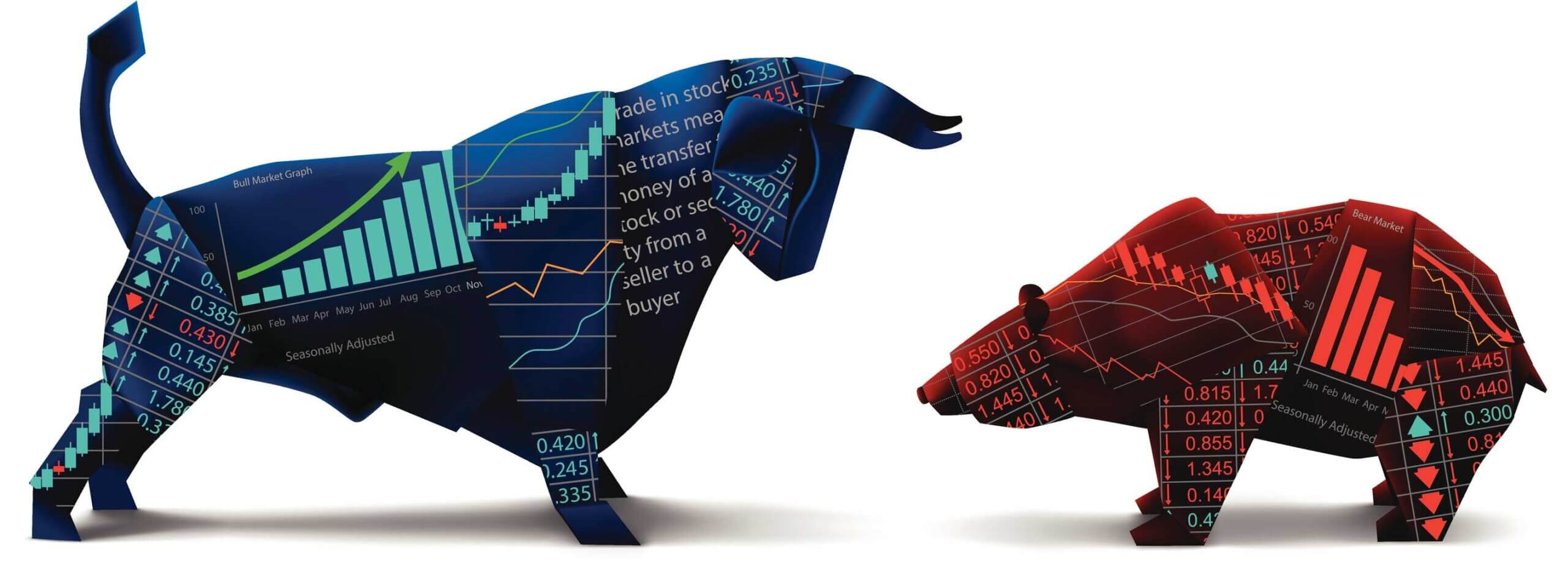If you have investments in the market, including stocks, bonds, real estate, etc., you’ve likely heard the terms Bull and Bear Markets. These terms are used to describe market conditions, like if they are appreciating or depreciating in value, and can drive investment decisions for investors.
While the terms of these markets are simple to understand, their causes and conditions are a little more complex. Read below to learn how these market conditions can impact your investments and investment strategy.
Bull Market
The term Bull Market refers to the uptick in the stock market after a period of falling stock price when the economy is on the rise or in a stable condition. For an uptick to be considered a bull market, the stock prices need to increase by at least 20% after two steady declines of 20% each.
There are a few factors that characterize a bull market, including optimism and investor confidence, which occurs when the economy is strengthening or remains strong. Factors contributing to the steadiness include a strong gross domestic product (GDP), a drop in unemployment rates, and a rise in corporate profits, noted by Investopedia.
As an investor, a bull market is prime time to invest because there is greater liquidity in the market, meaning that with more securities and fewer sellers, investors can buy and sell quickly at reasonable prices, potentially turning a profit quickly.
In addition, as more investors participate during a bull market, companies may reward shareholders by increasing dividends, meaning that as the market starts to rise, the earlier an investor gets on board, the better.
Below are a couple ways to take advantage of a bull market:
- Buy and Hold: As optimism in the market increases, so does the buy and hold strategy. This approach helps buyers sell their securities at a profit when the market is at its peak.
- Retracements: Known as a brief period in which the trend of a security’s price declines, investors often wait for a dip in the market before purchasing a security, knowing it will likely increase again.
The last (and longest) recorded bull market spanned from 2009 to 2020 and was driven by low interest rates, investor optimism, and a strong index gain. In 2024, investors are experiencing a bear market. Learn more below.
Bear Market
Bear Markets occur when there is a 20% decrease in security prices after an extended period of market highs, such as when the economy is receding and stocks decline in value. These markets are characterized by investor pessimism and negative sentiment as company profits start to decline, according to Investopedia.
As growth declines nationwide, and evidence of a recession or economic downturn become apparent, investors will rush to offset assets to protect against losses in a bear market. For example, after the longest-recorded bull market, lasting through February 2020, the market switched to a bear market amid the COVID-19 pandemic. Shortly after, the Russia-Ukraine war deepened investor fears, along with lower employment and disposable income rates, further shifting the economy.
These markets can be either short-term or long-term, lasting from a few weeks to several decades. A secular bear market is long-lasting, anywhere from 10-20 years and a cyclical bear market is short-term, lasting from a few weeks to several months.
Essential terms to know for a bear market:
- Short Selling: This strategy includes selling borrowed shares and repurchasing them at a lower price. This is a risky technique because if the trade value is higher than expected, the investor could be forced to purchase the shares back at a premium, resulting in heavy loss.
- Corrections: This short-term trend allows value investors to get into the stock market but are not a suitable choice due to the difficulty in determining a bear market’s rock bottom. Trying to recoup losses can be challenging, unless an investor uses specific strategies, like short selling, to earn gains in a declining market.
Both bull and bear markets can determine how your investments perform, and can drive both your short- and long-term strategies. To stay prepared, make sure you’re reviewing trends, reading articles from trusted sources and financial advisors, and making changes when necessary.
Related:
Investing in the Stock Marketing: Basic You Need to Know
Inflation and the Market: What Every 401(k) Investor Needs to Know





